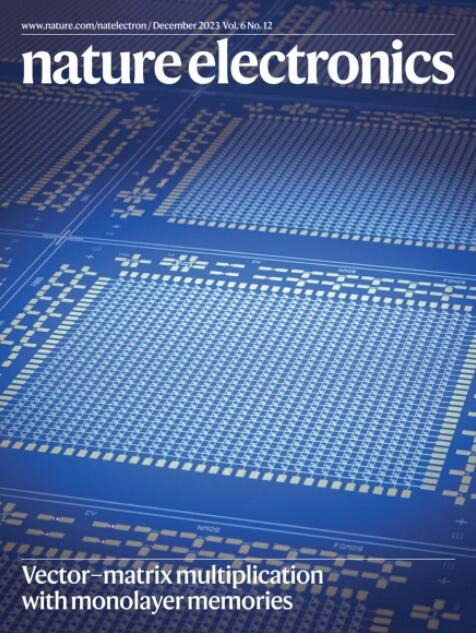Defects make better semiconductors
IF 33.7
1区 工程技术
Q1 ENGINEERING, ELECTRICAL & ELECTRONIC
引用次数: 0

缺陷造就更好的半导体
伊利诺伊大学香槟分校的研究人员发现,在某些化合物半导体中,缺陷会自组织成电中性复合物。这些复合物将深层陷阱推近导带边缘,并在那里充当供体。因此,引入缺陷的 CuIn5Se8 场效应晶体管不仅没有降低性能,反而比缺陷较少的母体材料 CuInSe2 显示出更好的性能。晶体管的平均迁移率为 58 cm2 V-1 s-1,导通电流密度为 35 μA μm-1,阈下摆幅为 189 mV dec-1。它们被用于制造互补逻辑电路和环形振荡器(p 型晶体管用溶液加工的碳纳米管制造),以及 508 像素/英寸微型发光二极管的驱动电路。
本文章由计算机程序翻译,如有差异,请以英文原文为准。
求助全文
约1分钟内获得全文
求助全文
来源期刊

Nature Electronics
Engineering-Electrical and Electronic Engineering
CiteScore
47.50
自引率
2.30%
发文量
159
期刊介绍:
Nature Electronics is a comprehensive journal that publishes both fundamental and applied research in the field of electronics. It encompasses a wide range of topics, including the study of new phenomena and devices, the design and construction of electronic circuits, and the practical applications of electronics. In addition, the journal explores the commercial and industrial aspects of electronics research.
The primary focus of Nature Electronics is on the development of technology and its potential impact on society. The journal incorporates the contributions of scientists, engineers, and industry professionals, offering a platform for their research findings. Moreover, Nature Electronics provides insightful commentary, thorough reviews, and analysis of the key issues that shape the field, as well as the technologies that are reshaping society.
Like all journals within the prestigious Nature brand, Nature Electronics upholds the highest standards of quality. It maintains a dedicated team of professional editors and follows a fair and rigorous peer-review process. The journal also ensures impeccable copy-editing and production, enabling swift publication. Additionally, Nature Electronics prides itself on its editorial independence, ensuring unbiased and impartial reporting.
In summary, Nature Electronics is a leading journal that publishes cutting-edge research in electronics. With its multidisciplinary approach and commitment to excellence, the journal serves as a valuable resource for scientists, engineers, and industry professionals seeking to stay at the forefront of advancements in the field.
 求助内容:
求助内容: 应助结果提醒方式:
应助结果提醒方式:


